CASUALS
What does it mean to be a "Casual" in 2023?
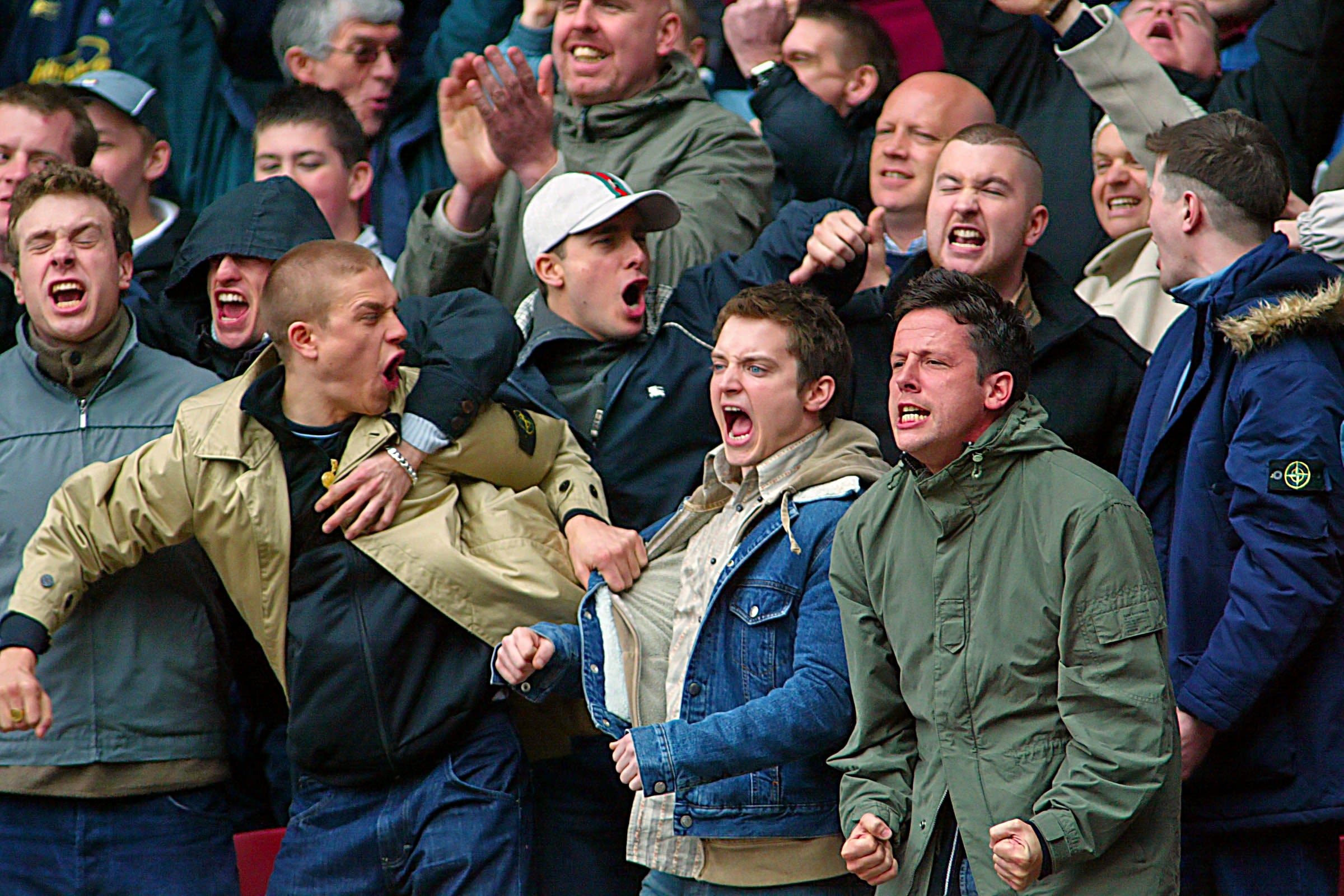
My whole life I have been surrounded by three things: football, fashion, and music. As my dad was a semi-professional footballer for Newcastle United when I was growing up, it was inevitable that this sport was going to be in my blood. But what connects the three together is something I’ve found myself resonating with over the years - which is the subculture of the Casuals.
The football Casual and terrace culture came around in the late 1970’s, originating in Merseyside, when lads travelling all around the continent following their team would bring back unknown designer Italian and French clobber, including brands like Fila and Sergio Tacchini. Such brands had never been seen in the UK before and this is where the “Casuals look was born”. These lads were no longer wearing their team colours and instead used this branded clothing to avoid the authorities on the terraces when tear ups would happen.
The subculture reached its peak during the late eighties but now the authorities, policemen and even the houses of parliament, were aware of the new fashion going around. So now it was a fight for who had the best and most expensive gear amongst the football firms in England.
The Casual scene was a huge phenomenon and what I want to work out is why it isn’t necessarily spoken about as much as goths, emos, and any other subculture. I’ve always had a huge interest in the Casuals and even with myself being involved on the fringes of the movement, I want to learn more about why it was so important and why it still is.

My dad as a semi-professional footballer for NUFC.
My dad as a semi-professional footballer for NUFC.

My dad as a semi-professional footballer for NUFC.
My dad as a semi-professional footballer for NUFC.
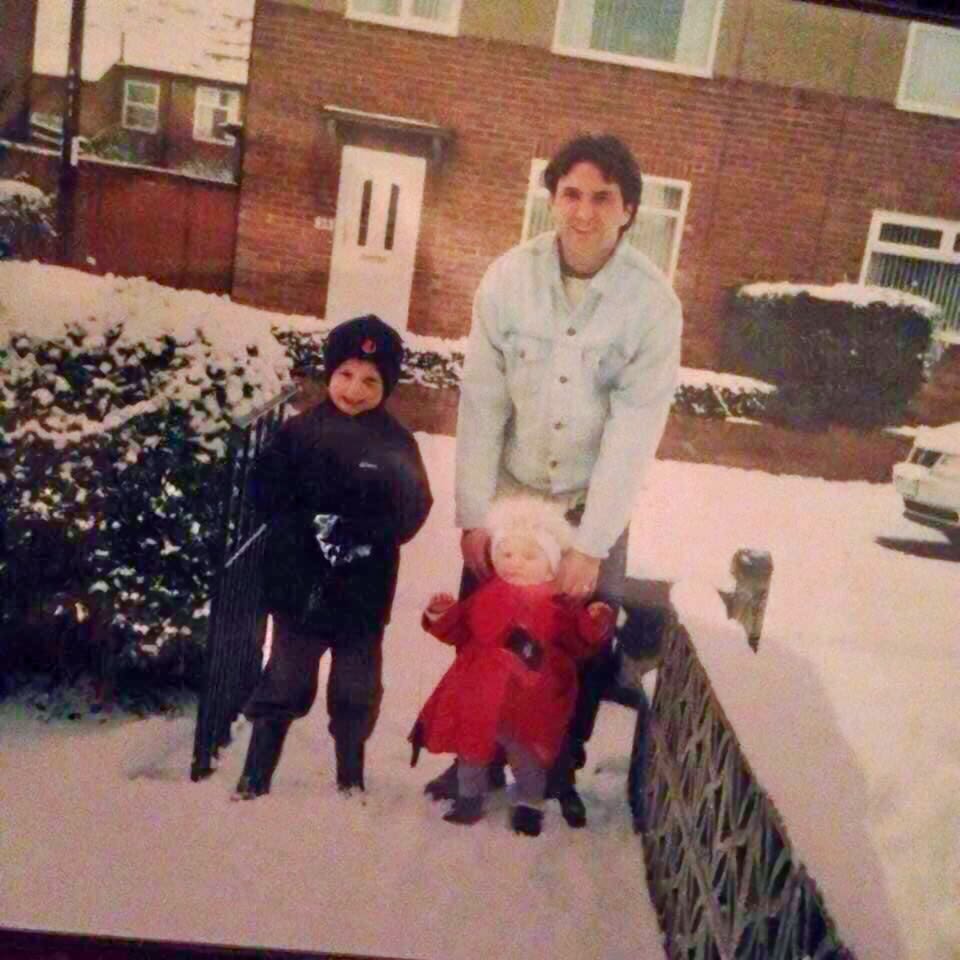
Me, my brother and dad back in the day.
Me, my brother and dad back in the day.

Me, my brother and dad back in the day.
Me, my brother and dad back in the day.
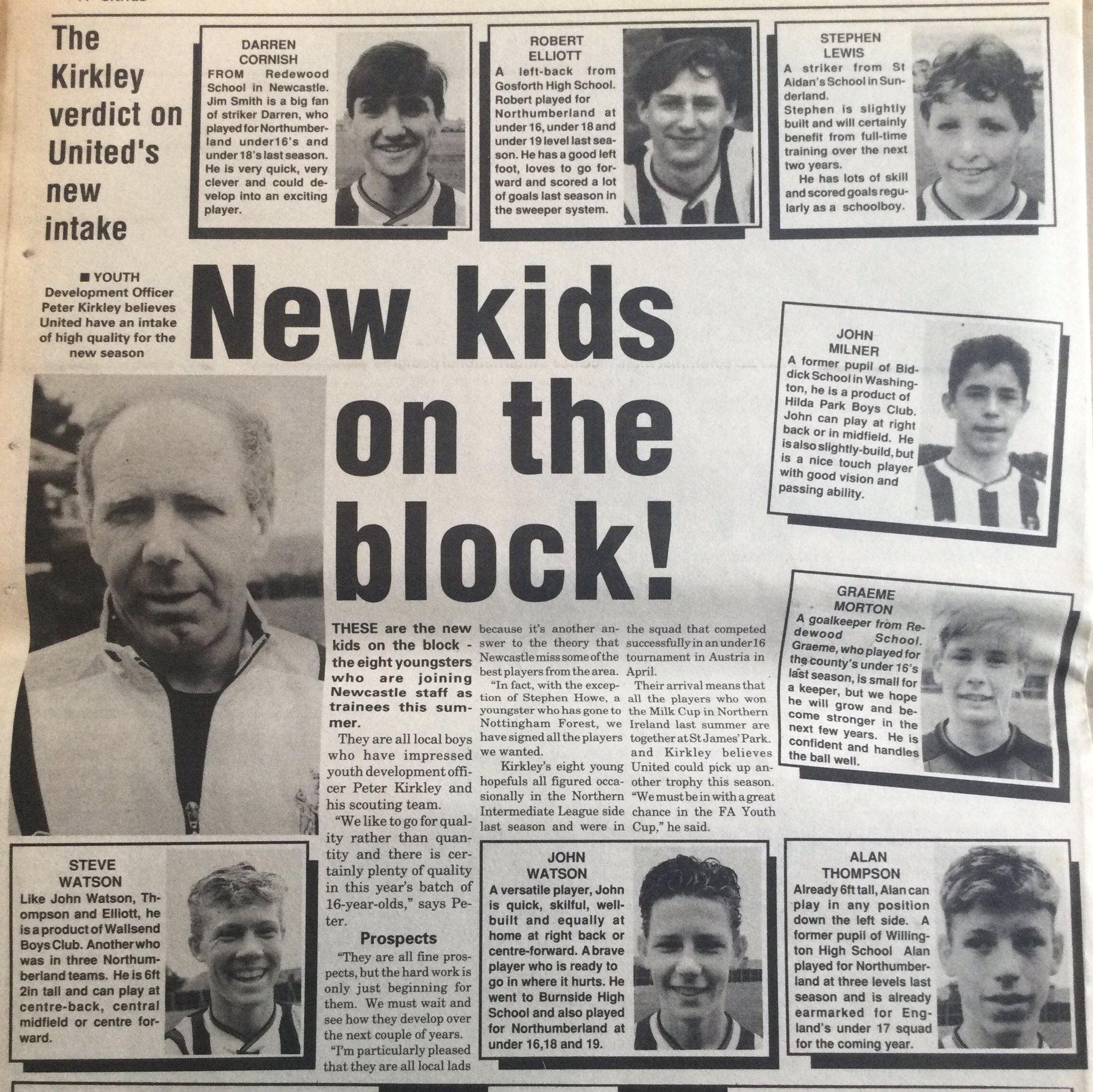
My dad as a semi-professional footballer for NUFC. Top left.
My dad as a semi-professional footballer for NUFC. Top left.

My dad as a semi-professional footballer for NUFC. Top left.
My dad as a semi-professional footballer for NUFC. Top left.
ATTITUDE
From an outsider’s perspective, the Casual scene looks as if it is a bunch of working-class men who enjoy a tear up at the football - but is that all it is?
Attitude comes hand in hand with any subculture. If we look into the Skinheads for example, they came around at a time when hippies were at an all-time high and there was a “peace and love” sort of ethos around. The Skinheads wanted to go against this and reject the youthful counterculture movement at the time. They came across as a very violent tribe, which of course led to negative media attention. This is very similar to the Casuals. What both had in common, like many subcultures, is that they grew out of the working class.
Sarah Cooper in her Football Pink article The 80s Terrace Casual, puts it like this: “The Casuals were a different breed. Subcultures in Britain usually grew out of London and spanned a range of backgrounds and interests. However, the only thing it had in common with previous subcultures, was that it remained a product of the working class”. It’s interesting to see that the men I noticed as a kid were from working class backgrounds, sometimes working minimum wage jobs, and yet indulging in the best branded clothes that would probably cost a week’s wage in order to get on board with the Casuals culture.
The attitude Casuals portrayed was that of very confrontational men who possessed this aggressive demeanour but also had extreme loyalty towards each other.
Perhaps just a lot of the men were acting hard but some of these men were genuinely strong, with very violent behaviour who thrilled off having fights at the weekend on the terraces, as terraces became a place where these men could get away with it.
I spoke to cultural commentator Andrew Branch of the University of East London in the film below. In it he explains what a subculture is and how it develops. Referring to cultural theorist Phil Cohen’s ground-breaking analysis on subcultures he says: “He uses this term subculture because the ‘sub’ bit is subordinate. It’s not an equal culture, it’s lower, subordinate to something else. That thing that it is subordinate to is the parent culture.”
Branch also mentions Cohen’s analysis of why men in subcultures like the casuals like to wear expensive brands. “What he thinks he’s spotting,” says Branch, “is that these young guys, at least in their clothes, are kind of playing out the fantasy of what it means to be a young working man” - which as Branch points out is totally a contradiction, because with the casuals this was during a time when inflation was rising, and young men were struggling to find work.
In the film Branch also says: “It probably was partly about how young men are playing out a performance of masculinity as a way of saying well this is who I am, this gives me some currency”. I’ve been aware of this sort of hypermasculine attitude for a lot of my life. Being brought up around a dad and brother hugely into football and coming from a super working-class in the North of England, I recognise what he is talking about.
Branch goes onto tell me a personal story about how he bought a pair of boots he really loved, even though he spent half his wages on them because back then it was so important and puts it down to a concern with status. “So even if you were pretty poor, you saved up for things that were ridiculous to save up for, because they bore no relation to what your expenditure was.”
Andrew believes that the politics behind the Casuals was to do with, “asserting this working-class identity”. This makes sense to me as the lads connected to the culture were working minimum wage jobs, and going out to watch football, which is a working-class sport. So they were the epitome of working class.
Find my interview with Andrew below:
Chapters
0:00 - Could you explain what a subculture is, how they started and what they're about?
19:10 - How would you, yourself, define a subculture?
33:37 - What do you think the state of subcultures are like today?
39:29 - How do you think the Casuals fit into the idea of a subculture?
45:20 - To what extent do you think Casuals were at their height politically?
50:05 - Do you think Casuals still exist today?
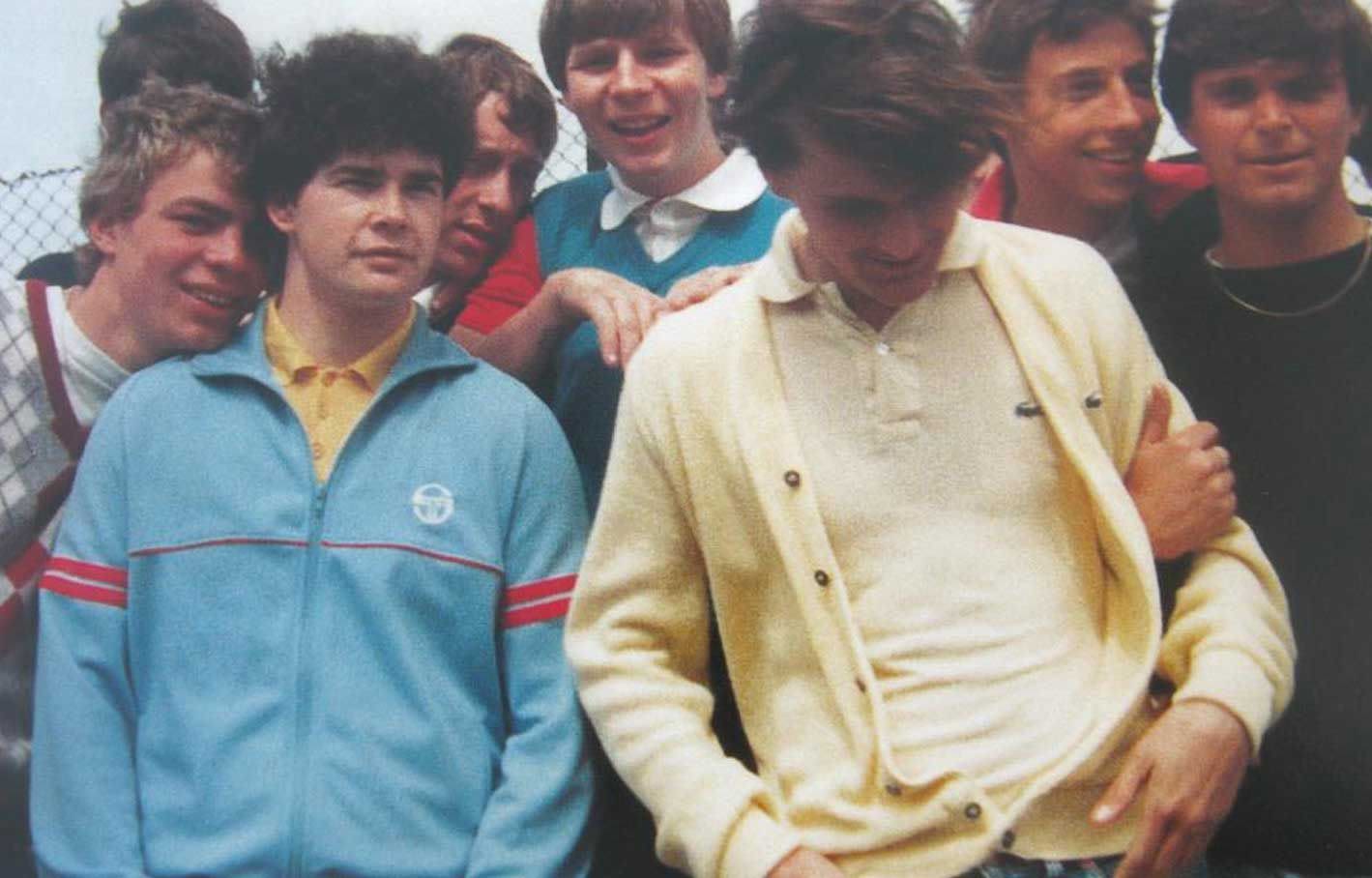




FOOTBALL HOOLIGANISM
Politics.co.uk define hooliganism as: “disorderly, aggressive, and often violent behaviour committed by members of the crowd at sporting events. In the UK, hooliganism is exclusively related to football.”
The Casual subculture has always been associated with hooliganis. Hooliganism did take place as part of other subcultures, such as the Mods and Teddy Boys, however not on the terraces as it did with the Casuals. One difference between the Casuals and the Mods was that Mods were known for fighting against Rockers, an external subculture, whereas the Casuals fought amongst themselves based on what football team they supported and who they rivalled with.
The aim was to create an identity that could be identified by their rivals – rivals meaning their opposing football team, but to avoid being identified by the authorities. Match goers would stop wearing scarves or shirts with their football team colours on them and started to wear expensive brands of clothing to be able to look as similar as possible to the other teams’ fans to not catch the attention of police, by wearing the same sort of clobber. Something to be aware of is the firms within football, “A Football firm is often the term given to a group of football hooligans who are travelling together often to engage in violence with the other teams firm” Different firms would take place between football fans of different teams, they would organise meet ups amongst themselves to deliberately start fighting and use violence towards each other.
One of the most infamous and “deadliest” football firms in England, hugely active between the decades of the 1970s, 1980s and early 1990s, was the Inter City Firm (ICF) associated with London team West Ham United.
Cass Pennant is a huge figure within football hooliganism. Pennant was one of the top boys of the ICF firm and is now a well-known published author, with books including “You’re going home in a fucking ambulance” and “Congratulations, you have just met the ICF”.
Cass: “I grew up with gang culture, and it extended to football, and in terms of gang culture, whether it was a football hooligan or hells angel or any gang, it’s got the same ingredients it’ll come back to - it’s a family. Gang culture is a family. The camaraderie, the brotherhood, the loyalty, all that.” This explains the strong relationship the men in each firm had with each other.
Football hooliganism reached an all-time high during the 1980’s. Even though fighting at football had always been a thing, during this decade hooliganism would lead to a series of serious disturbances, at home, away and abroad, which resulted in a number of deaths. With football, there is always that aspect of wanting the team you support to be the best on the pitch. But with Casual culture the desire by the fans to be best off the pitch as well reached new heights of violence, and winning fights while wearing the greatest clobber possible was all part of the game.
Bringing this closer to home, I recently discovered that my uncle was a huge football hooligan back in his younger days as a supporter of Newcastle United.
This became an ongoing hobby for working class lads all over the UK and was something to look forward to at the end of a week struggling to make ends meet. Cass explains: “Hooligans, girlfriends, partners, mums, dads, all ask the same question ‘why?’ and try to understand it. It’s a very dark world but it’s addictive. You’ve got addiction treatment for everything you can think of today… but football hooliganism is an addiction”.
The fact that films such as The Football Factory (2004), Green Street (2005) and The Firm (2009) featured football hooliganism and starred actors wearing the clobber, fighting at the football, and listening to ‘Casuals’ music just intensified the influence of the subculture.
However, some would argue that these films exaggerated the violence and created an unrealistic image of the Casuals.
Asking Cass if he agreed with this he explained, “I’m a well-known former football hooligan but I’m also a filmmaker. I’ve also been involved with the films you’ve mentioned…” Cass worked as a consultant on the film Green Street and played a cameo role in it.
When attending the premiere of Green Street, Cass explained to the producer that “the real guys are going to hate this, they are going to be critical of it, but it’s going to be a hit because football violence back then, 2004 I think it was, it became a bit old hat and a new fan base had taken over, so I said that whole world of football today is going to love the film, it’s going to be a massive hit – and it was.”
Interestingly, I feel that hooliganism has developed more online in recent years, more than on terraces like it used to be. Are team rivalries going at each other more on social media outlets like Twitter than in person these days? Reading Neil Graney's article on SB Nation, he looks into the question of “Is internet trolling simply replacing the violence we used to see on the football terraces?” and writes that “The use of trolling by football fans towards players, officials, opposing fans, owners, media figures, and even their own team’s fans is on the rise, and simply replacing the violence we used to see on the terraces”
ESafetyCommissioner, describes online trolling as “when someone posts or comments online to ‘bait’ people, which means deliberately provoking an argument or emotional reaction.”
In the film below Cass Pennant talks about being a former football hooligan and his interpretation of the Casual scene.
Chapters:
0:00 - How Cass' love for West Ham began
05:23 - Was the violence an addiction?
09:10 - Can you explain Casuals to someone who is unaware?
15:39 - Do you think films like Green Street over-exaggerate the violence that actually took place?
28:55 - Was this way of life taken up by just working-class men?
47:42 - Inspiring people to not go down the hooliganism route.
54:53 - Urban Edge films and his upcoming projects.
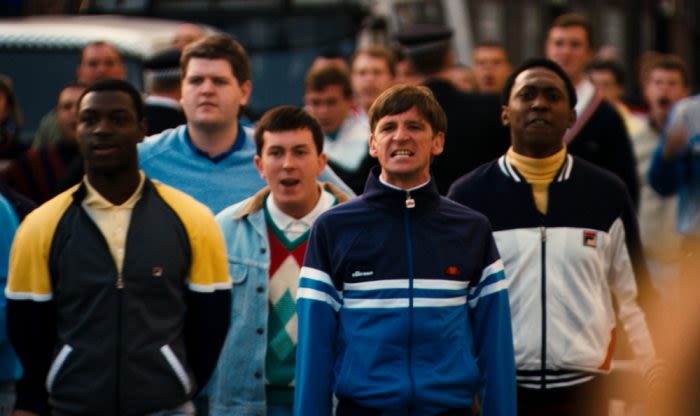


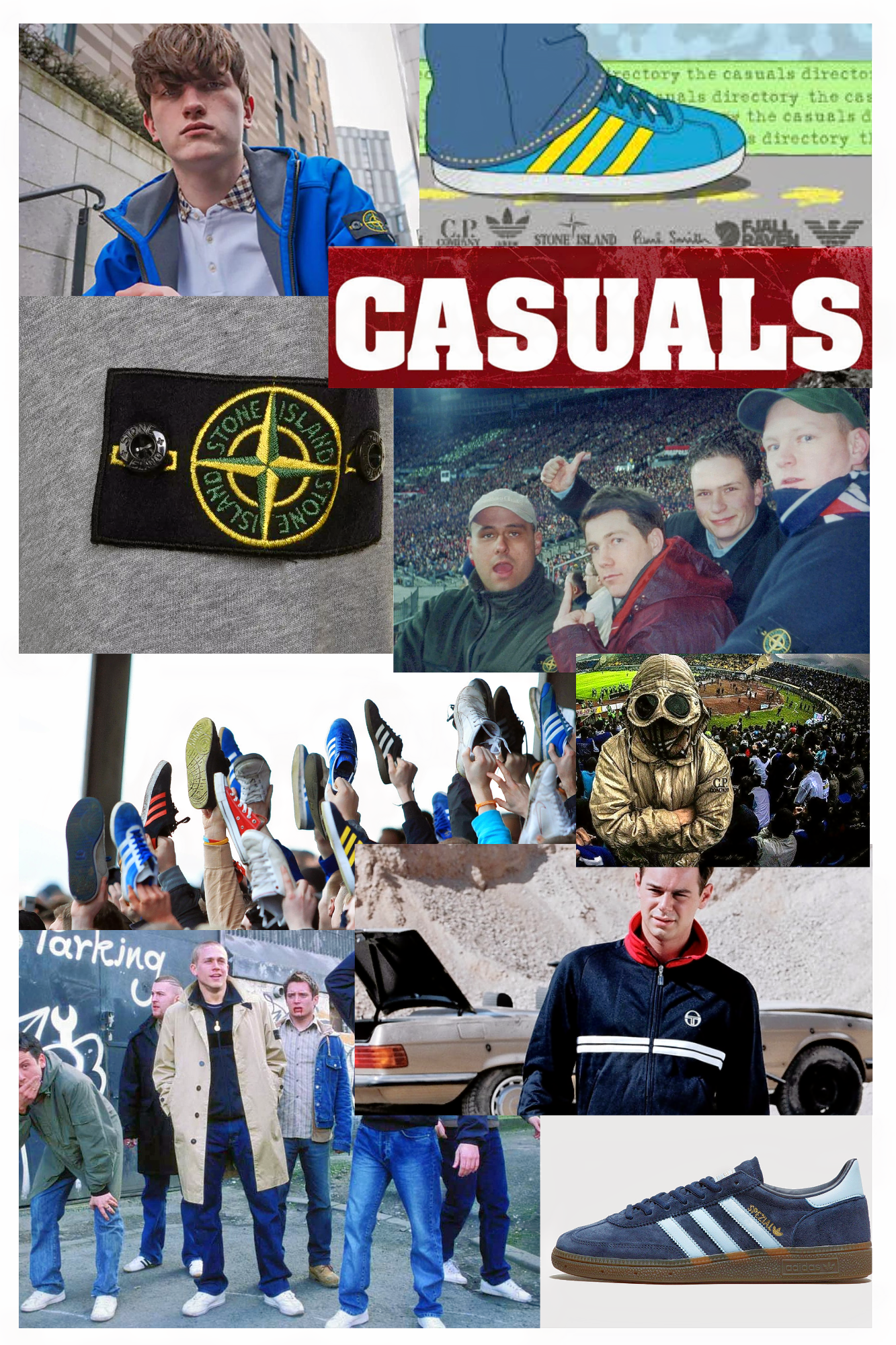
Collage of Casual fashion. Made by Clarisse Cornish.
Collage of Casual fashion. Made by Clarisse Cornish.

Collage of Casual fashion. Made by Clarisse Cornish.
Collage of Casual fashion. Made by Clarisse Cornish.
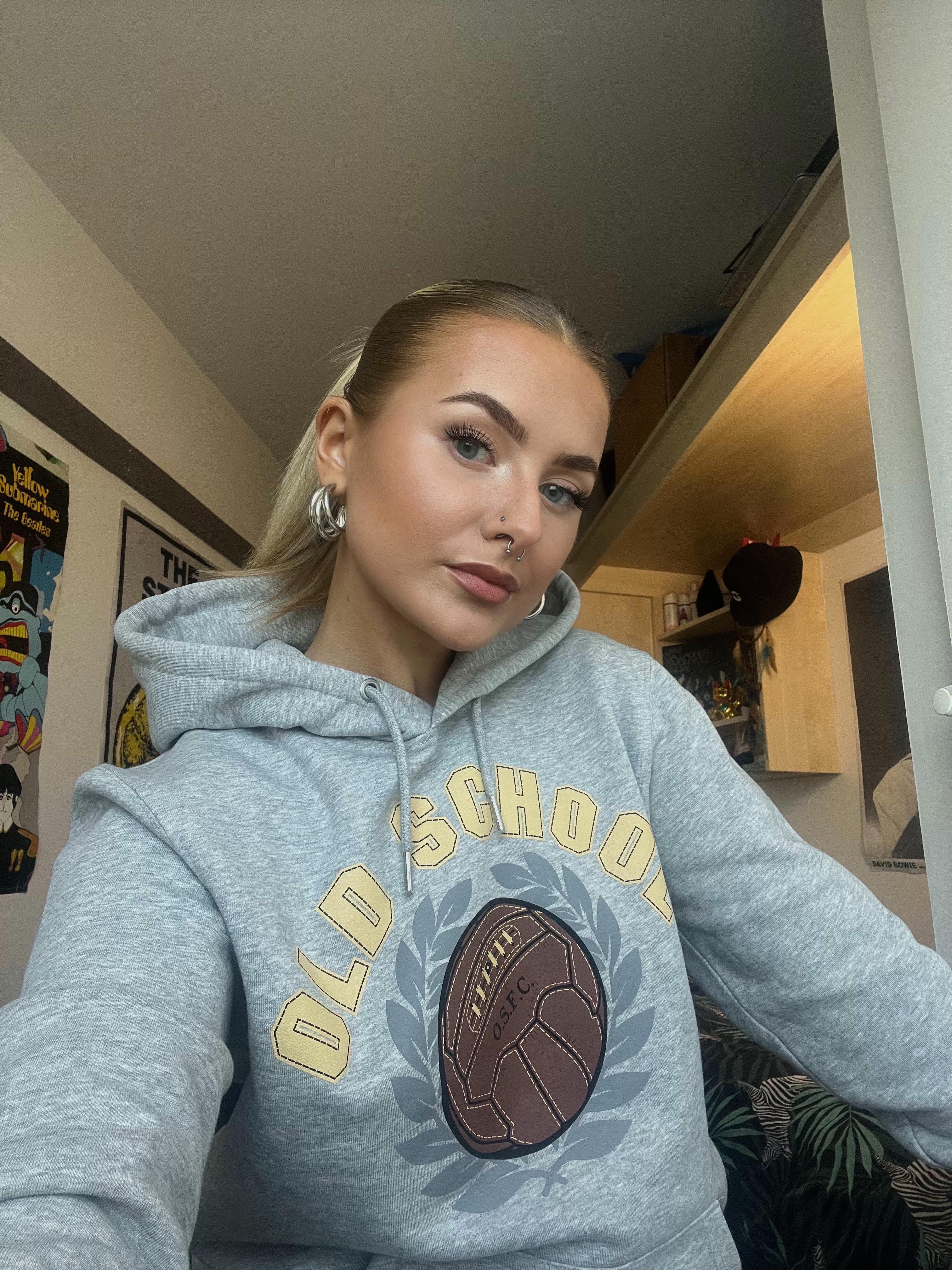
Cass Pennant's clothing brand Old School FC.
Cass Pennant's clothing brand Old School FC.
THE CLOBBER
Casuals treated brands such as Sergio Tacchini, Adidas, and Fila like an everyday uniform, and the fashion became a hugely important aspect of their everyday lives. To be able to understand the fashion aspect of Casuals subculture, you need to know its influences, also in terms of the different subcultures which come before it. This includes the youth movements which started between the years of 1950 and 1970 such as the Teddy Boys, The Mods, The Rockers, Skinheads and Punks. Even though all these subcultures are different to one another, they share a huge concern with fashion, and the fashion of the Mods and the Teddy Boys clearly influenced the Casuals.
We have already heard how the main purpose behind Casuals “clobber” was to stand out on the terraces when attending football games. This clobber comprised sportswear, Italian designer brands, jumpers, tracksuits, straight leg jeans and trainers. Inspiration for the clothing also came from other sports including motor racing, golf, skiing and tennis. Brands previously unheard of in the UK such as Ellesse, Diadora, Fila and Sergio Tacchini became well-known staples of Casuals culture.
Different trends came and went, meaning another designer staple would suddenly appear on the terraces. Because social media didn’t exist back then, new trends would be discovered via word of mouth and through seeing what other people were suddenly wearing at games. This is where the idea of “one-upmanship” began, as everyone would want to be better presented than the other. This rivalry did not just exist between members of different firms, but between members of the same firm. The rarer the brand the better.
Cass Pennant reminded me that as this all happened before the age of Google etc. “None of that was about in the 70’s,” he said. “You didn’t have the communication so a town would become Casual because a few likely lads have gone to a holiday camp, seen how other people were dressing and brought it back to his hometown.”
Having produced his own documentary called Casuals, Cass is an expert on everything to do with the subculture, including the fashion. So it’s not a surprise that he has his own Casual brand, named Old School FC which you can see modelled on myself. The fact that Old School sells well shows that the fashion aspect of the subculture is still alive today and that fashion on terraces will always be a thing.
These unknown clothing brands were discovered and brought to the UK by football fans between 1977 and 1984, by fans travelling all over Europe for the European cup. The clothing and Casual look became a source of pride to fans who were travelling abroad for their team. Cass Pennant makes a point that the Casuals were the first ever youth subculture not to come from London. “Every youth subculture, fashion-wise, started in London or was influenced by London. This is the only fashion I know that went the other way. It started in Liverpool, and Manchester closely followed, well before London”. This shows that unlike most subcultures, the Casuals have some northern roots.
Nowadays, the Casual scene is more presented in clothing brands like Stone Island, CP Company and Adidas. The brand Stone Island has become a huge staple piece in modern day football and is still worn by people who want to be seen as tough amongst the crowd. Stone Island and CP Company is usually styled with Adidas trainers including Gazelles, Spezials and Munchen.
Stone Island still comes with a bad reputation, as if to say whoever wears it is tougher than the other and ready for a fight. As the Sole website puts it: “To this day, select pubs and clubs across the United Kingdom will bar those wearing Stone Island from entering due to the negative connotations associated with the brand. Some fans even speculate Manchester City's manager and Stone Island fan Pep Guardiola was forced to remove the iconic compass badge from his clothing during games”.
From my experience, Stone Island is one of the biggest Casual staples of today.
THE SOUNDTRACK OF THE TERRACES
If finding an artist of today who is the epitome of Casual culture interests you, let me introduce you to Andrew Cushin. Cushin is a 23-year-old, Geordie indie/rock musician who represents everything about the Casuals culture of today - down to his fashion and his music style.
Having been inspired by bands like Oasis, it was not surprising that Cushin went down the route of being a Casual. The Cushin website says he is “the product of his up bringing”, which happens to be Newcastle, like me. The singer is collaborating with one of the biggest Casual clothing lines of today, Weekend Offender, and is often seen wearing clobber such as Stone Island and Fred Perry.
The Casuals subculture was a natural progression from the Mods - most people went from being a Mod to a Casual. People within these groups shared a similar taste in music – including bands like The Jam, with front man Paul Weller being heavily influenced by the Mod scene.
The TTT football fanzine website puts it this way: “In terms of style, it was a very natural progression to go from being a Mod to becoming a Casual. Bands such as The Who, The Small Faces and The Kinks had all been popular amongst Mods.”
However, the eras of music mostly associated with the Casual culture are the ones associated with “Britpop” and “Madchester” – in the late 1980’s/1990’s. These movements included bands like Oasis, Blur, Ocean Colour Scene and The Stone Roses. Looking at The Stone Roses in particular, they were the most influential band of their era. Again from the TTT site: “As working-class lads who loved their football, it was inevitable that this band would become a favourite on the terraces in Manchester & across the UK in general.”
I’m a huge fan of bands like Oasis, The Stone Roses and the Happy Mondays, so it was no surprise that I was drawn into the culture that also loved this kind of music. Looking up to front men like Liam Gallagher, I always envisioned myself as being the female version of him. And so, I looked into what he was interested in other than music, and found it was fashion and football. Knowing a lot of people who are the same way with Liam Gallagher, looking up to him as if he was their idol, including people close to me like my dad and uncle’s, he is known to be a fashion icon to many.
One thing that connects these bands, in my opinion, is their working-class backgrounds. These bands had front men like Ian Brown and Liam Gallagher: working class football fans themselves, who wore brands that Casuals wore. This is music and terrace culture overlapping with fashion in a way that created a strong connection for me.
Bill Osgerby, writing on the Museum of Youth Culture website, thinks that the fact that the Casuals had such varied musical tastes meant that “in the Casual scene music was less important than football.” But I think that when three things are so inter-connected in a subculture - in this case football, fashion and music - that it is impossible to say which is the most important.
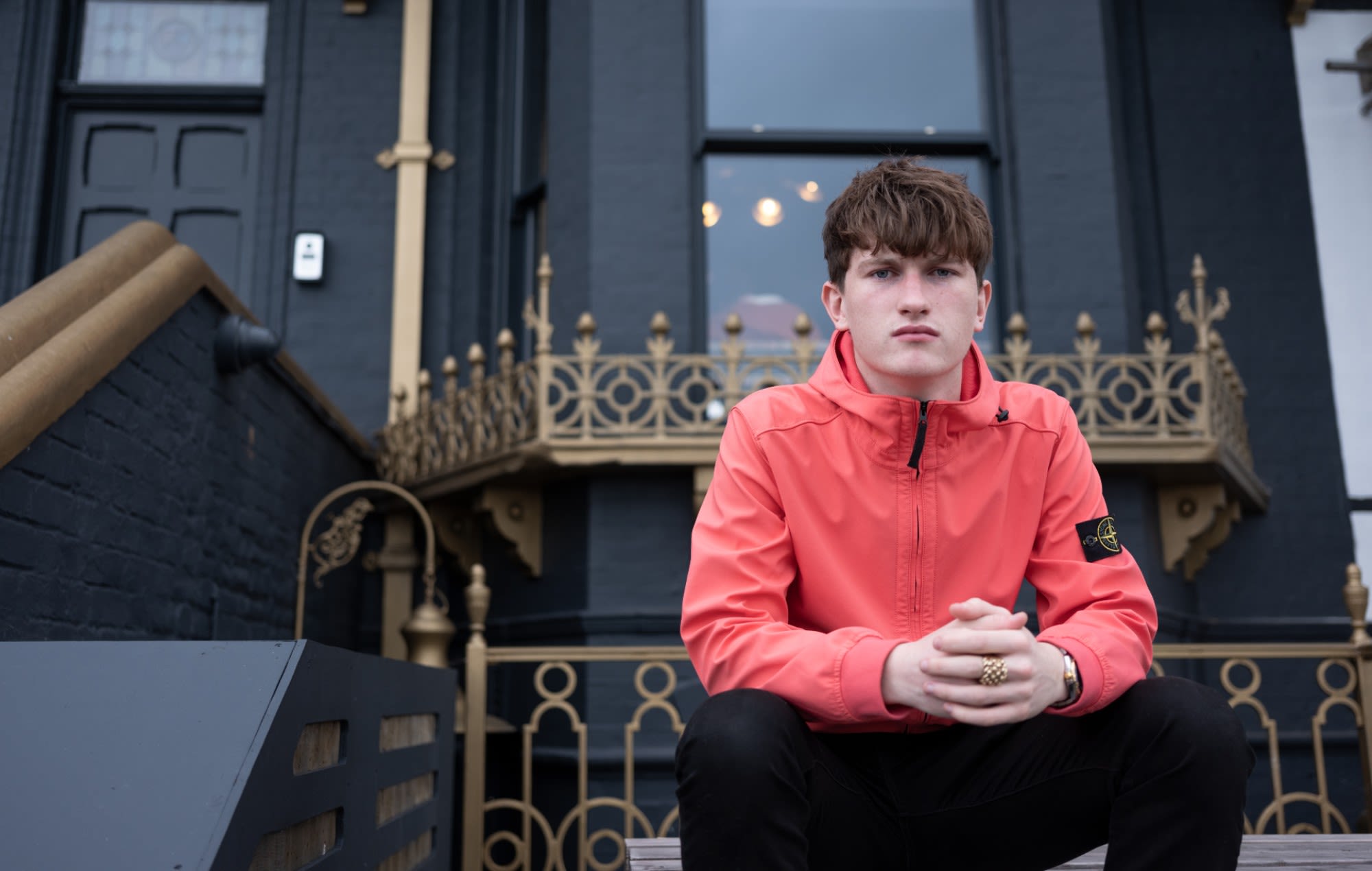
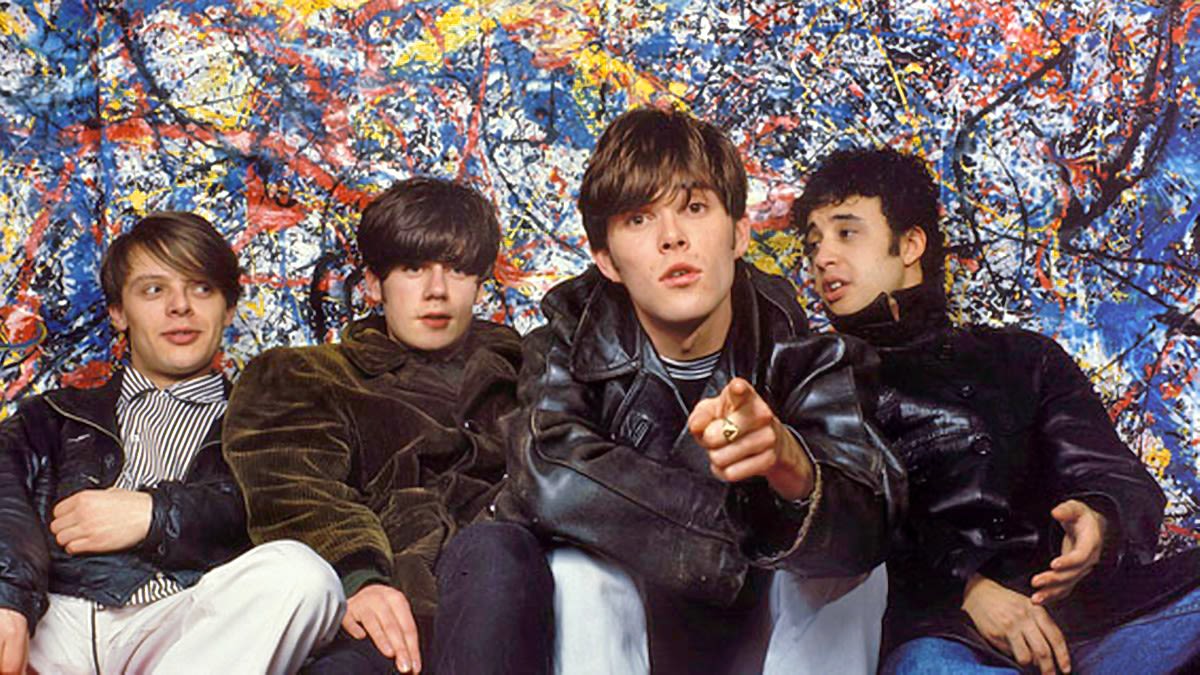

CASUAL GIRLS
The Casual subculture is generally associated with working class men, but what happens when women feel they have a connection to the culture too?
Other than the football violence, it could theoretically attract anyone, of any gender, race, sexuality, etc. I guess what would resonate more with women than the attitude would be the clothing and the music.
Even though most of the clothing brands represented by the Casuals, specifically Stone Island and Sergio Tacchini, are designed for men, this doesn’t mean women can’t rock them all the same.
And no, the Casual girls are not just “somebody’s girlfriend” - as one of the girls photographed as part of an article entitled Casual Girls on the RSS fashion site accuses someone of suggesting she was.
They actually listen to the music, enjoy the football, and feel comfortable wearing the clothes. Just like the male Casuals, these women treat the clobber as if it is a uniform, and use it to define them as a member of a clan.
In his Football and Fashion article, Bill Osgerby writes: “The Casual football firms were a male domain. But Casual style found its equivalent among young working-class women who shared the same taste for expensive sportwear and fashion brands”.
I talked to Mia Bowie, a keen follower of the Casual movement who defines herself in the way she dresses and the music she listens to, and she told me she became aware of the culture when she was around 13.
“I’ve got an older brother who is two years older and he started getting into it… I’ve always been aware of it... I always kind of looked up to him anyway and what he was wearing, and I’d go to the football with him and listen to what he was listening to. He was the one who got me into it”.
Mia told me her dad wore the clothes but was against the culture itself, which is something I can relate to, because my dad also wears the clothes but doesn’t agree with the attitude that is associated with the Casuals.
Mia soon added aspects of the culture into her everyday style. “It has shaped me. All through school I was wearing that, and it wasn’t really a thing everyone else was wearing. Maybe some of the boys but definitely not the girls. It’s always influenced me and that’s the sort of style I want. It’s stayed constant throughout the years. I’ve never thought ‘oh I’ve outgrown it.’ I’ve always thought the style is great”.
Mia is a fashion design graduate and even produced a collection when she was in college based on Casuals titled, “Did You See The Stylish Kids In The Riot?”. She was set the task to create a three-outfit runway and had to decide what style and what music to base it around. So she chose a Casuals theme. She designed a woman’s piece from male clothing and even got complimented on it by The Specials lead singer, Terry Hall.
Asked what she thinks of women being frowned upon for being a part of something that is very male based, Mia explained that, “Anyone within the subculture they think it’s great and they love it. I think they think of it as a novelty. I don’t think many of them frown upon it, but I think anybody outside of it won’t understand and [men will think] ‘why are you wearing that’?”
Mia’s favourite Casual brand was hard for her to choose but she landed on Sergio Tacchini. She likes how it has stuck to its roots and never changed over the years, which I totally agree with, having a grey Sergio Tacchini jacket in the wardrobe behind me myself.
Speaking about the culture itself she said her favourite thing about being involved is meeting people who share the culture with her. “I was struggling to fit in and then I found this whole host of people, mostly online: girls, boys as well. I met people who understood me”.
Even though it is perhaps hard to come by, there are Casual girls out there still spreading the culture around just as much as the boys and it is interesting to see such an interest of the culture from a woman’s perspective.
Even looking at the platform TikTok, if you look into the Casuals scene through that, you will find so many women sporting the culture and young girls too, aging from 16-25.
Another Casual girl, who I’ve spoken to on and off, but however couldn’t pull for an interview is Roo Oxley aka missrooxley on Instagram. Who describes herself as “just a casual girl who enjoys footy, drinks and terrace culture.” From reading her interview on Proper Football, she explains how she got into the Casual culture.
“I started going to the match in the late 90’s, my first away game was Notts County and I remember being drawn to the mither and skirmishes all flourished in a sea of Burberry and Aquascutum. You either have it or you don’t, and Casuals just fucking have it”.
You can watch the full interview with Mia below:
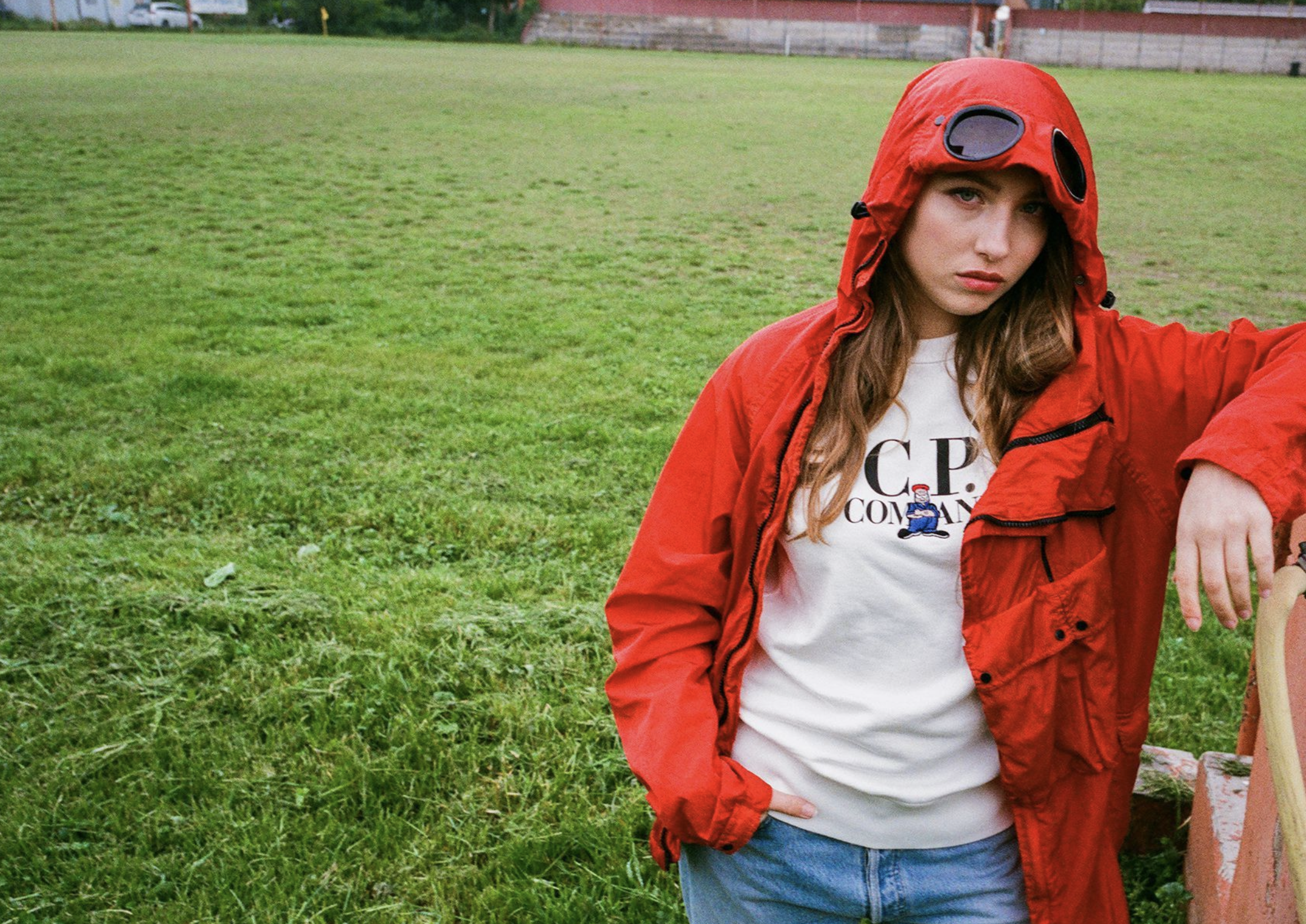
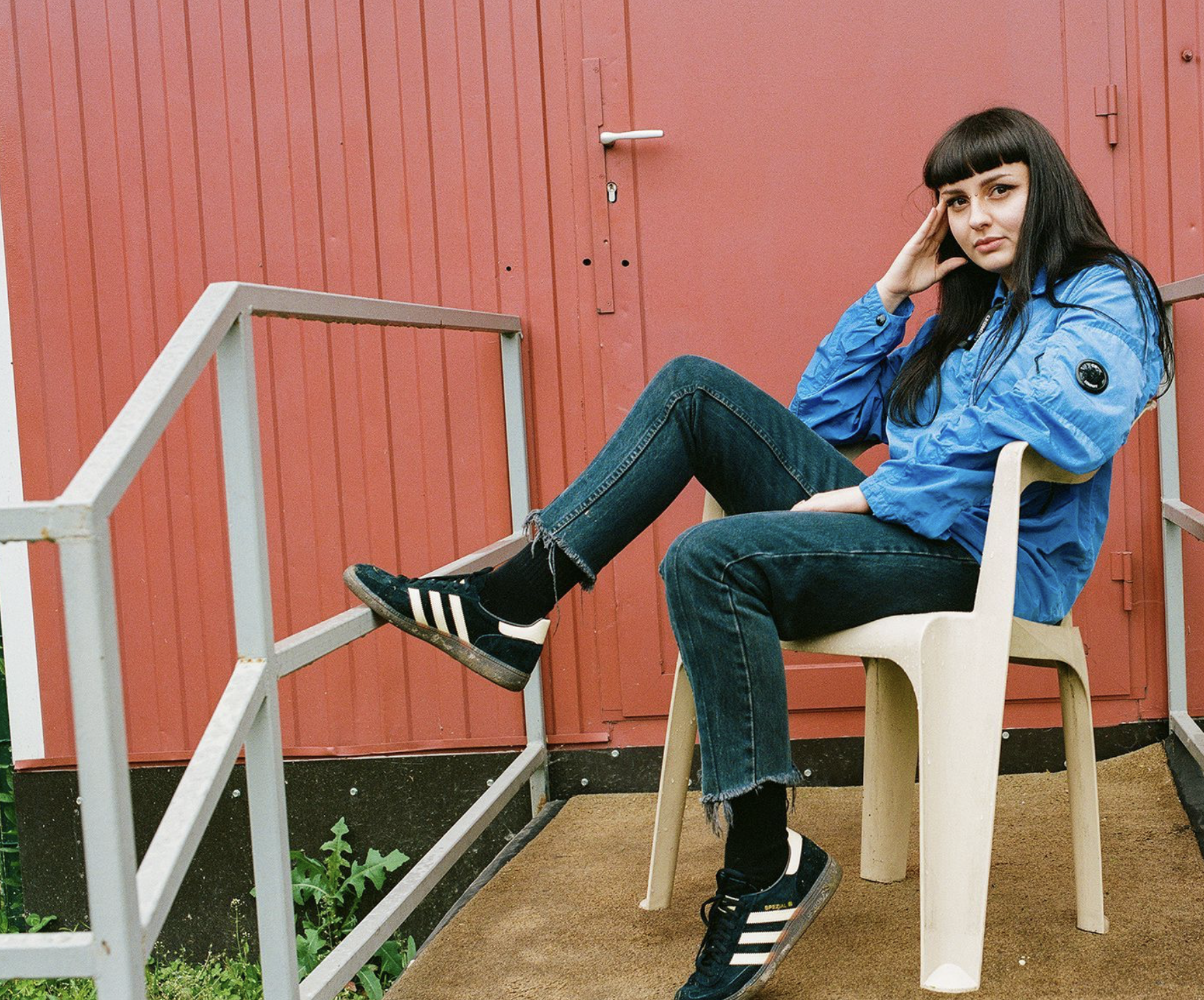
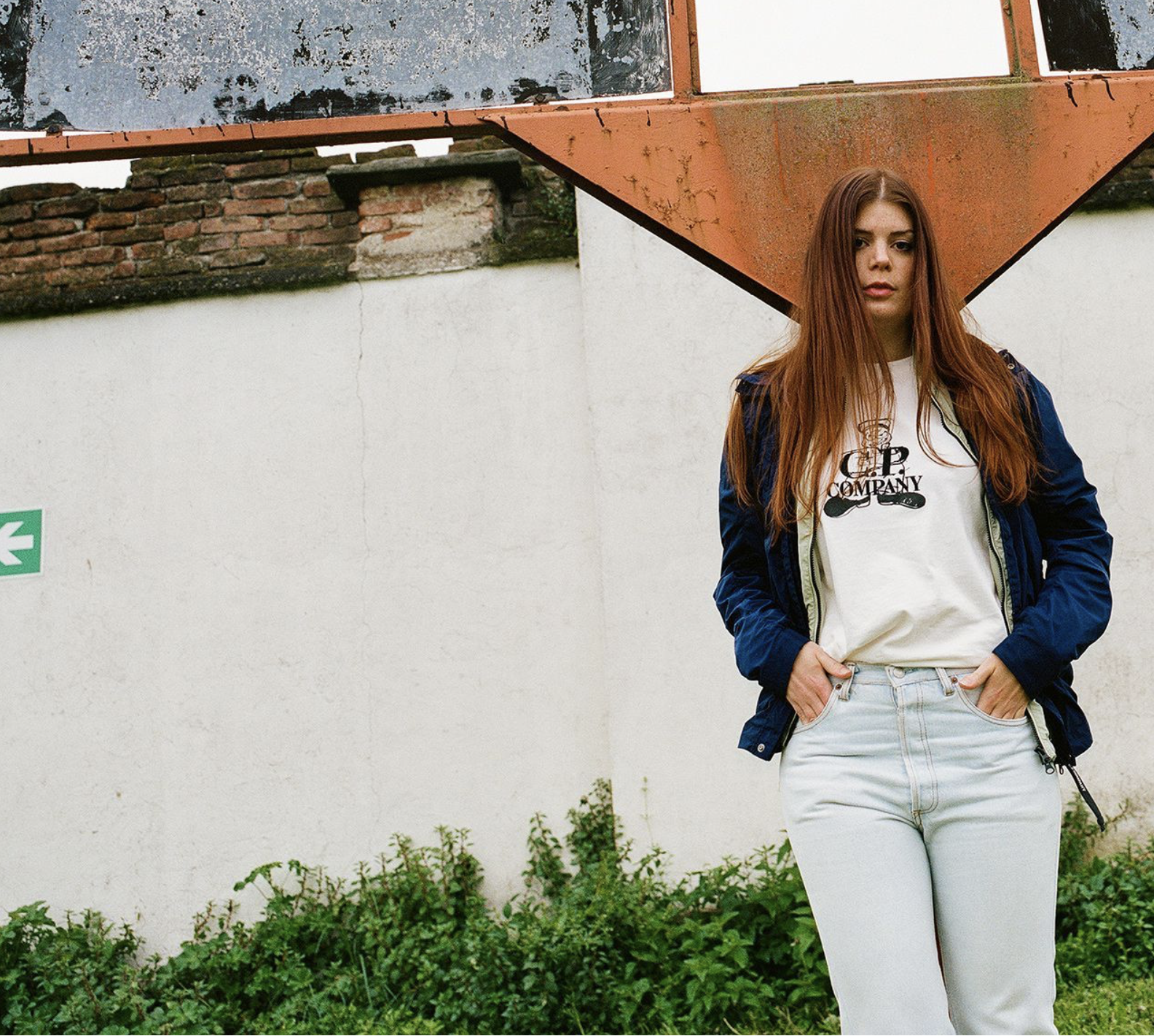
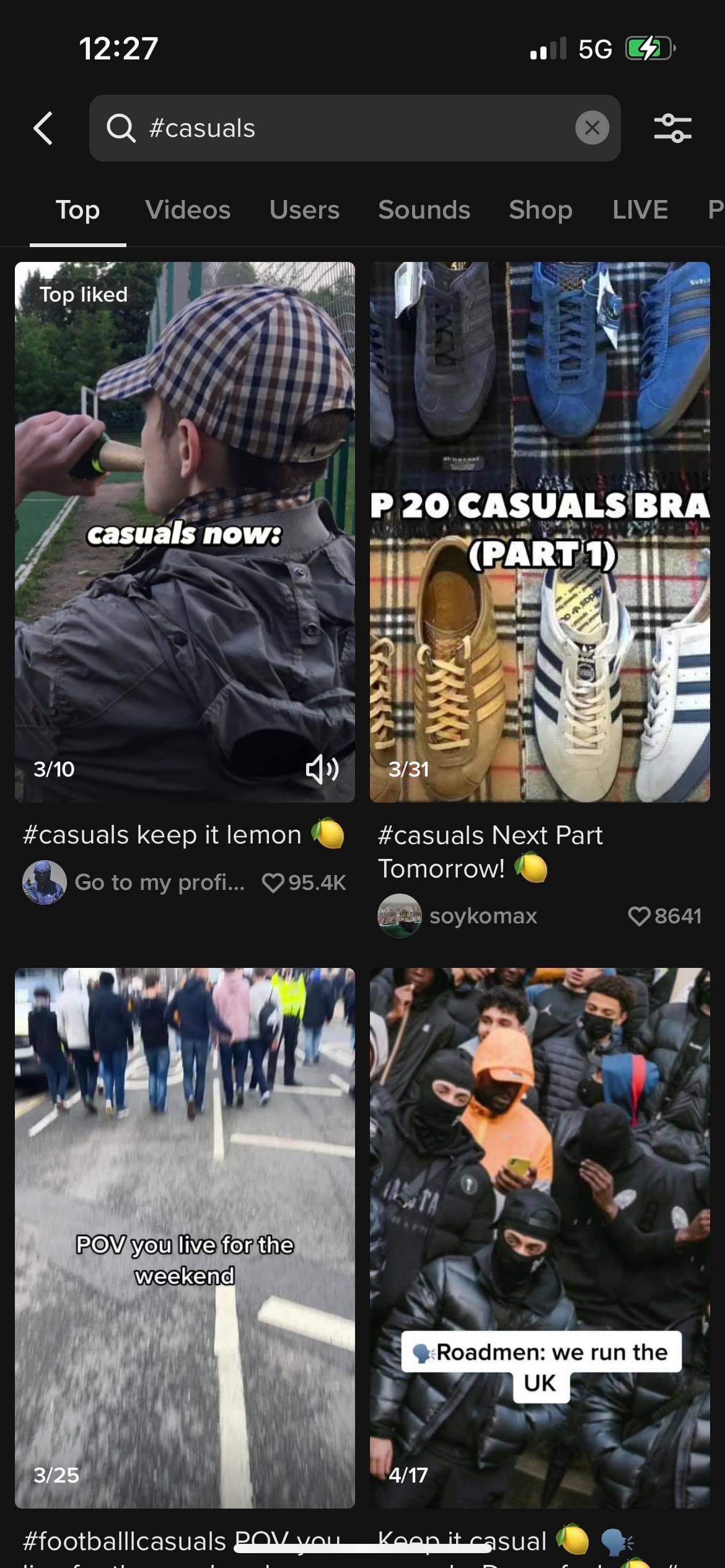
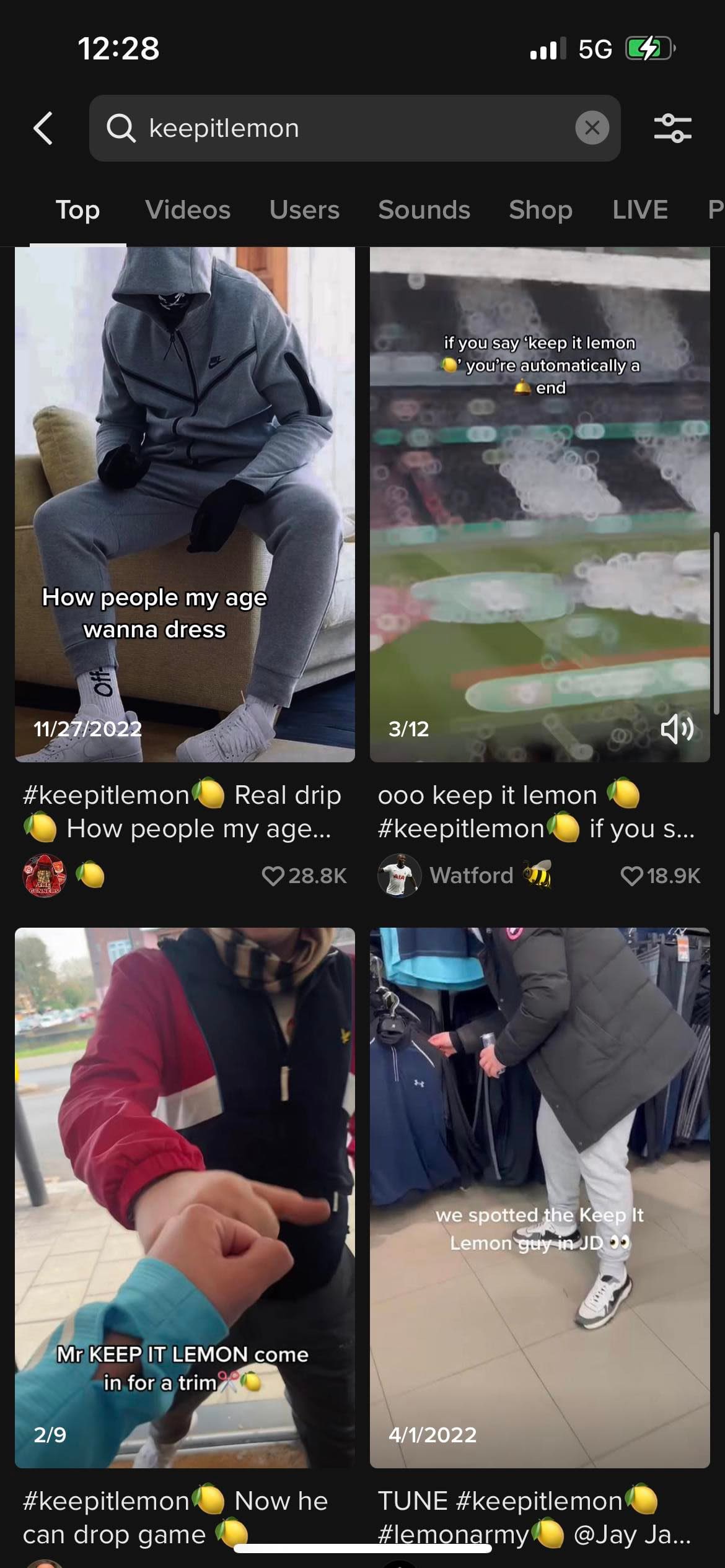
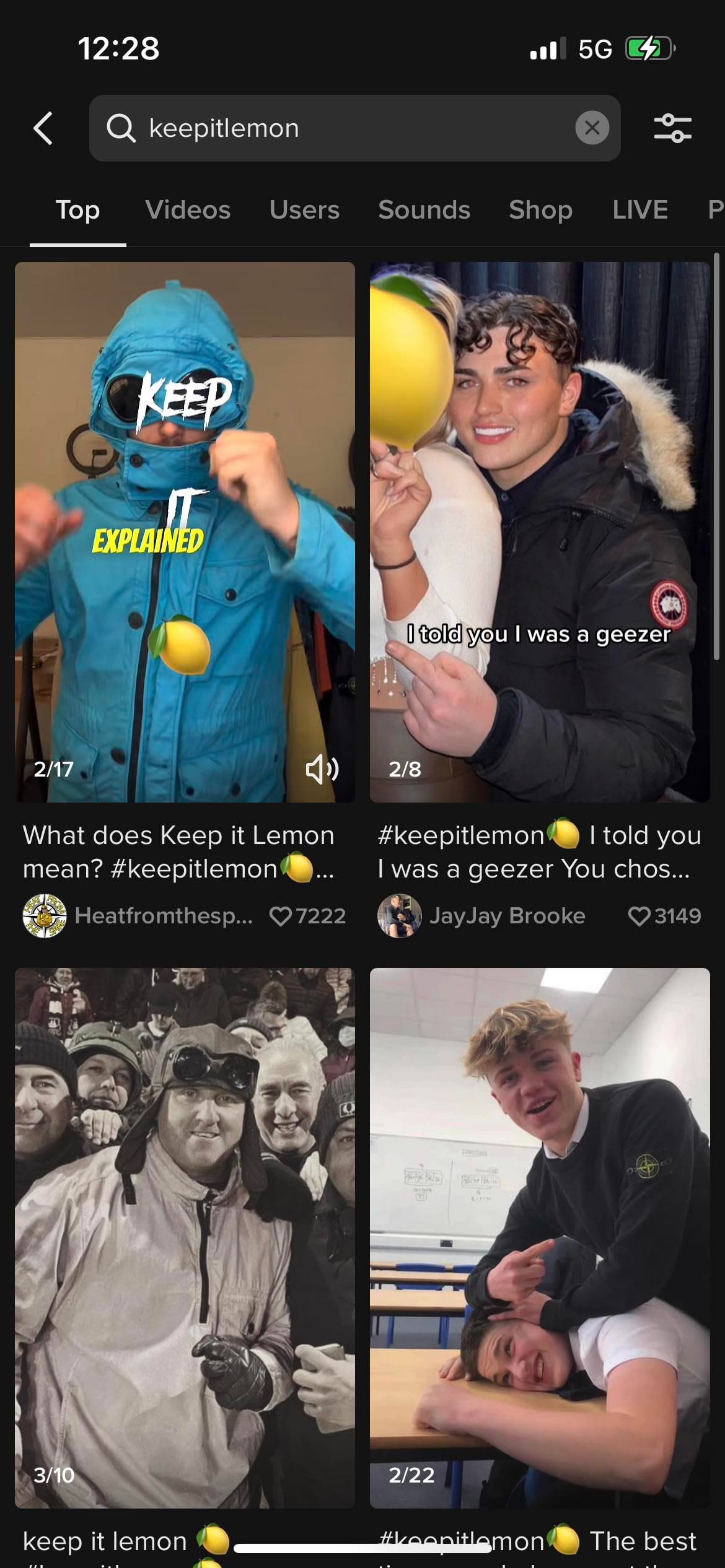
WHERE ARE WE TODAY?
Even though you might not think, the Casual subculture is still very much alive in 2023.
If you spend any amount of time on the hashtag Casuals on TikTok you will discover so many young people sporting Casual fashion, both men and women. The age range really surprises me, as my algorithm on the app shows 16- and 17-year old’s really invested in the culture.
Interestingly, there is another term going around on TikTok called “Keeping It Lemon” which relates to the Casual scene. It connects back to The Stone Roses and their uses of lemons. Using this term, you can see tons of young people sporting the clothing brands and listening to the music.
And one of the original Casuals, Cass Pennant, agrees: “People are aware of the culture. It’s gone international. The emerging groups of Casual subculture today are in Indonesia, Malesia, Japan and America”. This suggests that the subculture that for once did not start in London, has spread from places like Liverpool and my hometown Newcastle, across the globe.
Perhaps the full-on Casual scene from back in the late 80’s could rise again, or another subculture could come around inspired by the Casuals, but one thing is for certain - that this phenomenon will never die out and it just shows within the youngsters of today.
Something I have picked up on from the Casual culture today is that the term Casual has become kind of empty, and associated with nothing more than just looking cool – there isn’t that aspect of commitment anymore like there was back in the late 80’s. It isn’t a uniform as such anymore but just a way in which people want to dress or feel they fit into.
Growing up, I was so unaware of this culture. Not until recent years and it is something I feel I fit into and was something I was searching to fit into my whole life. So, maybe it is just the fact of people being just unaware of the subculture as a whole.
References:
Taylor, L. (2022) Casual Culture History & Terrace Subculture - 80's Casual Classics. Available at: https://www.80scasualclassics.co.uk/blog/casual-culture-history-and-terrace-subculture/.
Cooper, S. (2020) “The 80s terrace casual: a subcultural identity.,” Football Pink [Preprint]. Available at: https://footballpink.net/the-80s-terrace-casual-a-subcultural-identity/.
Politics.co.uk (2022) Football Hooliganism - All you need to know - Politics.co.uk. Available at: https://www.politics.co.uk/reference/football-hooliganism/.
The Story Of Hooligan Britain (2014). Available at: http://thefirms.co.uk/.
Strong, J. (2022) “Casual Culture - A Glimpse Into the Contentious Side of Football and Fashion,” The Sole Supplier, 16 December. Available at: https://thesolesupplier.co.uk/news/casual-culture-a-glimpse-into-the-contentious-side-of-football-and-fashion/.
Andrew Cushin (2022) AC About - Andrew Cushin. Available at: https://andrewcushin.com/about-ac/.
Weekend Offender (no date) Weekend Offender x Andrew Cushin. Available at: https://weekendoffender.com/pages/weekend-offender-x-andrew-cushin.
Barry, J. (2021) “The Soundtrack of the Terrace | Music & The Casual Scene — Through The Turnstiles,” Through the Turnstiles [Preprint]. Available at: https://www.through-the-turnstiles.com/football-in-society/the-soundtrack-of-the-terrace.
Club, L.Y. (2020) “Casuals - Museum of Youth Culture,” Museum of Youth Culture [Preprint]. Available at: https://museumofyouthculture.com/casuals/.
Tuzio, A. (2019) “Casual Girls,” Nss Magazine [Preprint]. Available at: https://www.nssmag.com/en/fashion/18599/casual-girls-c-p-company.
Thornton, P. (2003) Casuals: Football, Fighting and Fashion : the Story of a Terrace Cult.
Staff, H. (2005) “CASUALS: THE LOST TRIBE OF BRITAIN They dressed cool and fought dirty, but their impact on fashion has been largely ignored. Now they are making a comeback . . . in bookshops,” HeraldScotland, 8 May. Available at: https://www.heraldscotland.com/news/12493851.casuals-the-lost-tribe-of-britain-they-dressed-cool-and-fought-dirty-but-their-impact-on-fashion-has-been-largely-ignored-now-they-are-making-a-comeback-in-bookshops/.
Barry, J. (2022) “From Sergio Tacchini to Stone Island | A Brief History of ‘Casual’ Fashion — Through The Turnstiles,” Through the Turnstiles [Preprint]. Available at: https://www.through-the-turnstiles.com/football-in-society/a-brief-history-of-casual-fashion.
BBC News (2022) “Casuals: Liverpool exhibition shows era-defining football subculture,” BBC News, 8 October. Available at: https://www.bbc.co.uk/news/uk-england-merseyside-63175486.
Danslawson (2023) “Roo Oxley,” Proper Football, 25 April. Available at: https://www.properfootball.co.uk/post/roo-oxley.
Graney, N. (2019) “Is internet trolling simply replacing the violence we used to see on the football terraces?,” Roker Report, 5 August. Available at: https://rokerreport.sbnation.com/2019/8/5/20751460/is-internet-trolling-simply-replacing-the-violence-we-used-to-see-on-the-football-terraces.
Trolling | eSafety Commissioner (no date). Available at: https://www.esafety.gov.au/young-people/trolling.
The images included in this article are used for visual representation and illustrative purposes only.
